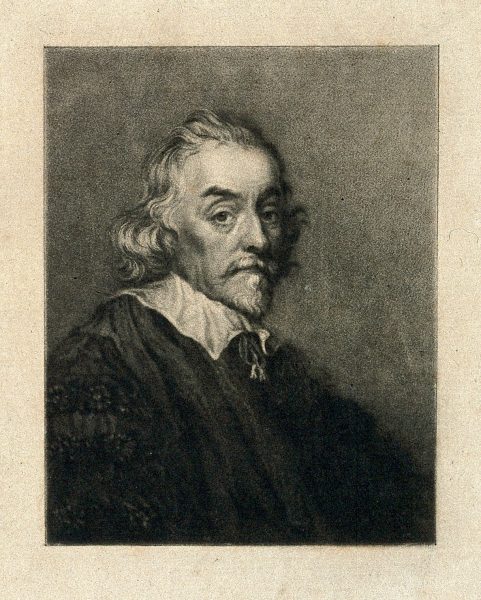William Harvey

William Harvey (copyright Wellcome Collection).
William Harvey was chief doctor to King Charles I of England. When the Civil Wars broke out, Harvey accompanied the king’s army to the first major battle at Edgehill on 23 October 1642. During the fighting, Harvey was in charge of looking after the king’s two children, Prince Charles (aged 12) and Prince James (aged 9). Harvey later told his friend John Aubrey that he sheltered with the princes under a hedge, taking a book out of his pocket to read but ‘a bullet of a great gun grazed on the ground near him’, which made him move further back.
After the battle was over, Harvey helped to care for the wounded. One of the injured men that he looked after was Sir Gervase Scrope, who was
‘dangerously wounded there, and left for dead amongst the dead men, stripped; which happened to be the saving of his life. It was cold, clear weather and a frost that night; which stopped his bleeding, and about midnight, or some hours after his hurt, he awaked, and was fane to draw a dead body upon him for warmth-sake’.
Scrope was eventually found by his son and taken to Harvey for treatment. Scrope was lucky to be treated by Harvey, a famous doctor who knew a lot about bleeding.
Harvey had studied at Cambridge and then Padua. At Padua, Harvey had learnt about the work of Vesalius and the importance of experimentation and observation. Back in England, he became doctor to James I and then Charles I. In 1628, he published An Anatomical Account of the Motion of the Heart and Blood, which was dedicated to King Charles. In this book, Harvey scientifically proved that blood circulated around the body, rather than being burned up in the muscles as Galen had suggested.
Although Harvey’s work was an important discovery, it did not have much impact upon medicine until later. Many doctors refused to accept his ideas because they removed the need for bloodletting, which was a popular treatment at the time. Some doctors did accept Harvey’s ideas and began to attempt blood transfusions, as they realised that Galen was wrong and lost blood could not be replaced by new blood created in the body. However, these were not successful, as blood groups had not been discovered.
